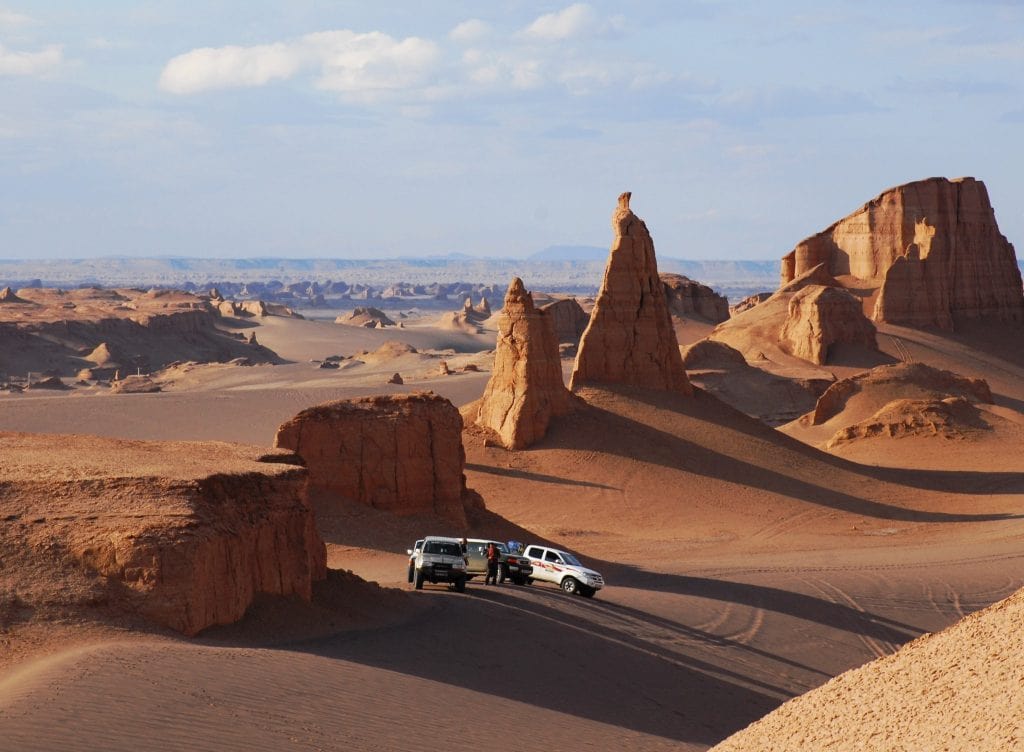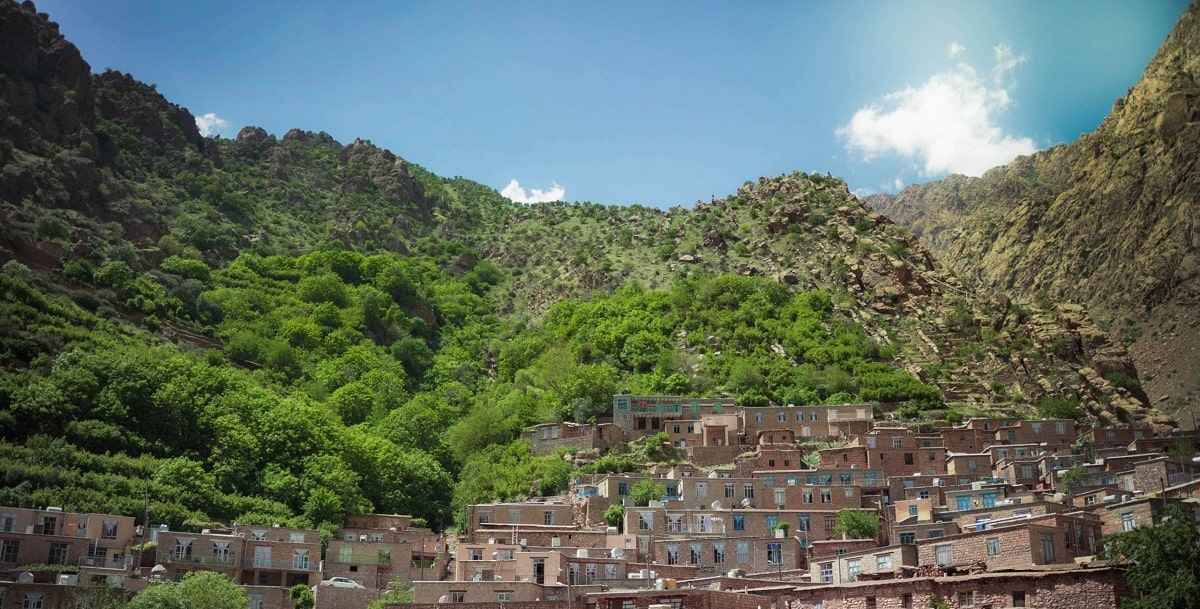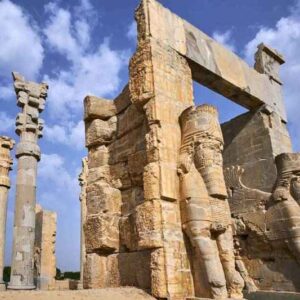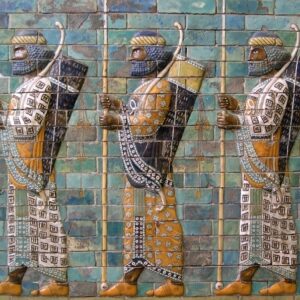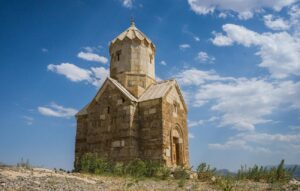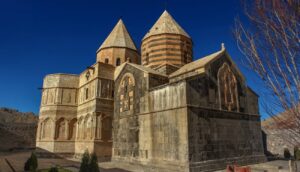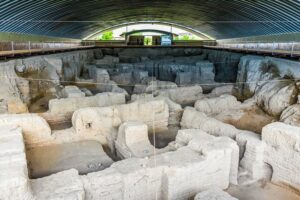Day 1: Tabriz (Arrival), Azeri Lifestyle of Iran Villages Tour
- Arrival at Tabriz International Airport, Transfer to Hotel to Take a Rest, Visiting
Tabriz, O/N Tabriz. (Today’s tour depends on the time of arrival) - Visiting Tabriz Poets Cemetery and El Goli Garden.
On the time of arrival at Tabriz Int’l Airport, our representative will welcome you. The tour guide will take you from the airport to the hotel. Let’s leave the pressure of flight under the shower and relax before the tour of Tabriz commences. Tabriz is the most significant region in the historic Azerbaijan area. It shows Azari culture, industry, modernity, and handicrafts. Tabriz’s history gained a huge impression from the Safavid Empire and the Qajar dynasty. However, most of the monuments and attractions prove the cultural and architectural heritage of those royal families. Also, UNESCO knows Tabriz as the world’s Carpet Weaving City.
Iran Villages Tour begins with the cemetery of prose and poems (Tomb of Poets). There are more than 400 poets to shape the biggest dead poet society under a well-designed Tomb. After that, we visit Amir Nezam House, which shows us evidence of the contemporary history of Tabriz. It is a Qajar Museum now. Then, we drive to El Goli Garden which embraces a large artificial pond and a mansion in the middle to have a relaxing evening.
Overnight Tabriz.
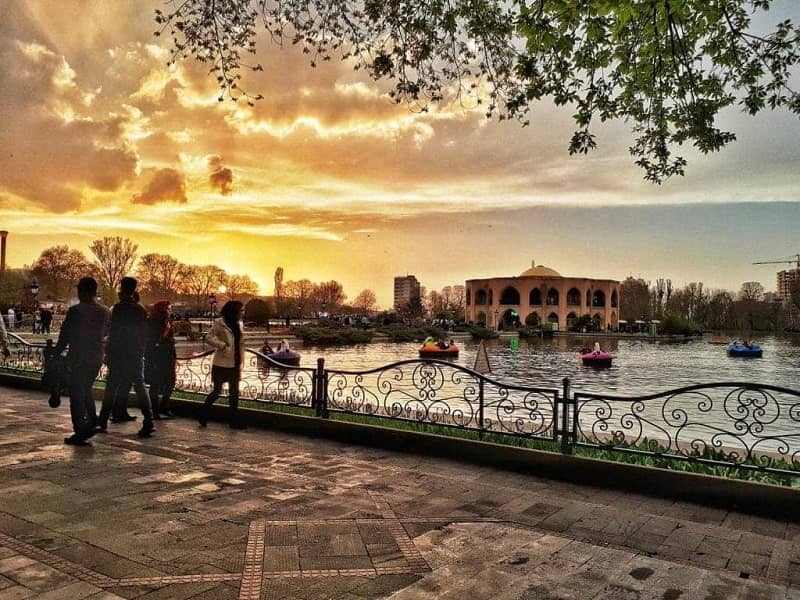
Day 2: Tabriz, Azeri Culture And Architecture
- Visiting Tabriz, O/N Tabriz.
- Visiting Blue Mosque, Azerbaijan Museum, Constitution House of Tabriz, Tabriz Grand
Bazaar (Tabriz Historic Bazaar).
Iran Villages Tour starts with the Blue Mosque, a witness to the history of the city since the pre-Safavid era. Good to know that the blue tiles at the grand entrance of Iwan caused the name of the monument. Most parts of the Blue Mosque were destroyed in a late earthquake. But, famous architects reconstructed the majesty of the mosque during the Pahlavi dynasty. After that, we walk to the Azerbaijan Museum which takes you on a tour through history. Archaeological finds date back to 5000 B.C. to the Sassanid era. Then, we will continue to visit Islamic seals and coins. Soon after, we take a walk to the Iron Museum which demonstrates astonishing sculptures by a contemporary Artist Mr. Ahad Hosseini.
The World’s Largest Roofed Bazaar Customs and Traditions
Then, our exploration continues with the Constitution House of Tabriz. It was a prominent pivot of revolutionary communities around 100 years ago. The house is a museum of revolutionary activists’ sculptures and their legacies such as letters and weapons. Next in order of time, we wander at Tabriz Grand Bazaar (UNESCO Heritage). The bazaar embraces a spectacular structure that includes many sub-bazaars as the largest roofed Bazaar in the world. It proves itself as a cultural, economic, and political center of the city. Tabriz Grand Bazaar is home to Tabriz Kilims and Rugs that shine like a diamond by their world reputation. Artists weave orchards onto the kilims and rugs with colorful designs. It lets users feel softness and freshness under their feet.
Overnight Tabriz.
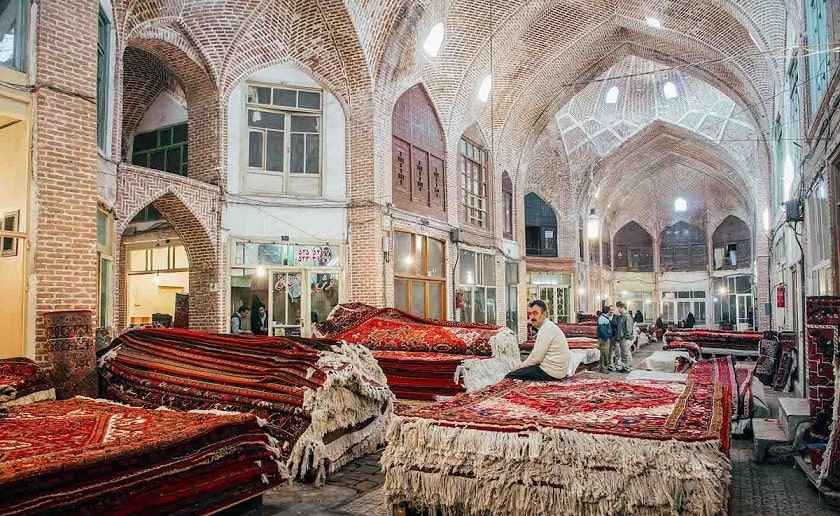
The spectacular cultural and architectural heritage of the bazaar attracts tourists. Tabriz Grand Bazaar feeds tourists’ souls with peculiar handicrafts, local sweeties, and the Azeri lifestyle.
Day 3: Tabriz, Cave-like Lifestyle Shines in Iran Villages Tour
- Drive 55 km to Kandovan Village, O/N Tabriz.
- Having an Expedition to Kandovan Village
Today, the Iran Village Tour takes us on an expedition to Kandovan village. Unbelievably, people build their cone-shaped homes in volcanic rocks to verify human integration with wild nature. The incredible village lifestyle in cave-like houses amazes visitors with identifying architecture. In Kandavon, locals have been living with ancient customs in the modern era. Purchase handicrafts in local settlements to experience the alive Kandovan lifestyle. Also, walk through the rocky pathways to enjoy the mesmerizing environment of the Kandovan Village. After tasting Azari cuisine in the Kandovan village, drive back to Tabriz.
Overnight Tabriz.
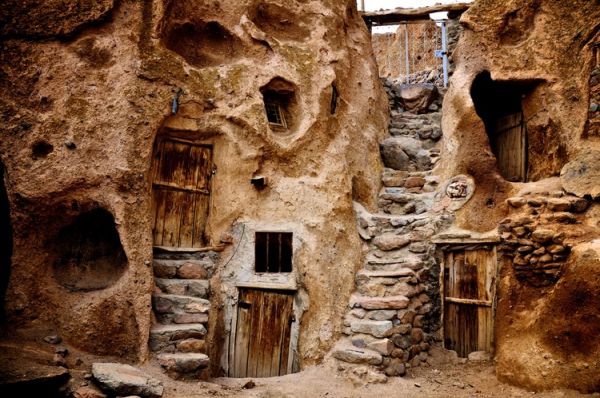
Day 4: Tabriz-Ardabil, Dazzling Nature and Azeri Local Traditions
- Drive 220 km to Sarein, O/N Sarein.
- Having Hot Springs Bath
- Having Time at Your Leisure
Ardabil is Sheikh Safi-ad-din’s birthplace, the founder of the Safavieh order. The orders shaped the root of the Safavid Dynasty ideology. Also, the city is rich in Persian food culinary heritage, and spiritual evidence. Ardabil established its brand for hot springs, natural landscapes, and Persian food heritage. Besides, for fresh fruits, nuts, sweets, cuisine, snacks, and handicrafts, especially silk carpets and rugs
Sarein County lies alongside the Zagros Mountain Range. It embraces picturesque landscapes and unique Persian cuisine culture. The county is the land of natural hot springs with a calm atmosphere to have massage and spa baths. The Zagros brings us wellness and health by offering a fresh Persian food menu. Also, traditional and modern pools with diverse treatments bring great relaxation.
Overnight Sarein.
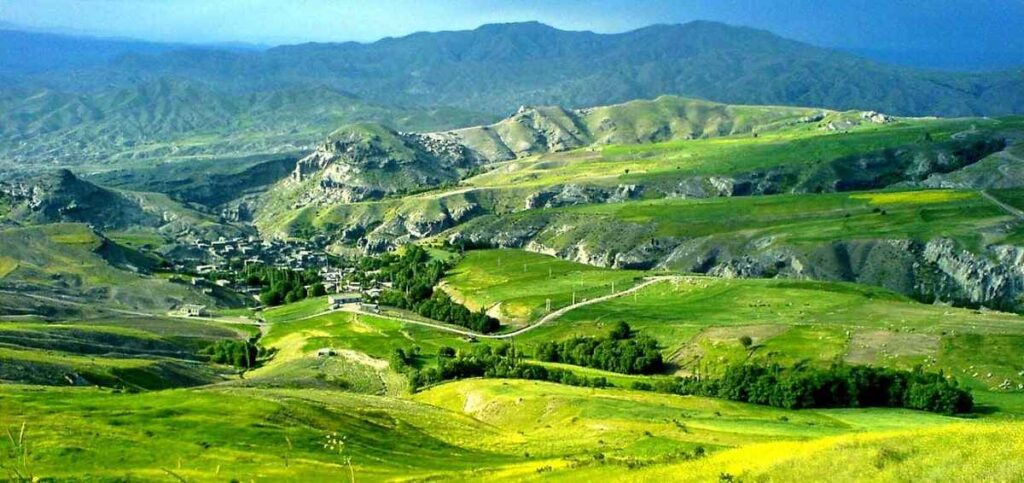
Day 5: Ardabil, Fresh-air Azeri Heritage
- Visiting Sarein, O/N Sarein.
- Visiting Sheikh Safi al-Din Khānegāh and Shrine Ensemble
- Having Bath and Message
- Having Time At Your Own Leisure
Today, the Iran Villages Tour devotes itself to Safavid Dynasty heritage. We start by visiting the Safi-ad-din Ardabili Tomb (UNESCO Heritage). Sheikh is Murshid of Sufism and his beliefs and ideologies created Safavid faith in Persia. The complex includes a khanghah, a mosque, and a courtyard. Besides, we experience Persian butchery in a land of livestock. Beef plays a significant role in Persian food culture. It means that most Iranian cuisine includes beef in its recipes. Also, Iranians barbecue kebabs as the most significant beef-based Iranian food.
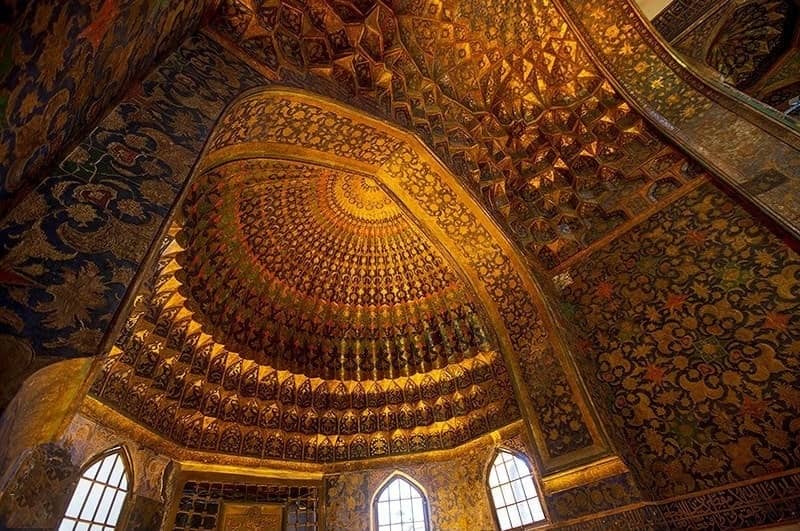
Safi-ad-din Ardabili Complex dazzles eyes by mixing artistic values of architectural styles to present Sufism at the highest point of spirituality in Ardabil. Though, Ardabil dedicates thousands of hectares to cows & sheep to graze for meat and dairy production. Then, we enjoy the most traditional Persian food that Iranians call Dizi. Dizi includes meat, beans, tomatoes, and spices such as pepper and salt. Iranians eat Dizi with Sangak bread for lunch to enjoy traditional Persian food mostly on Fridays.
Overnight Sarein.
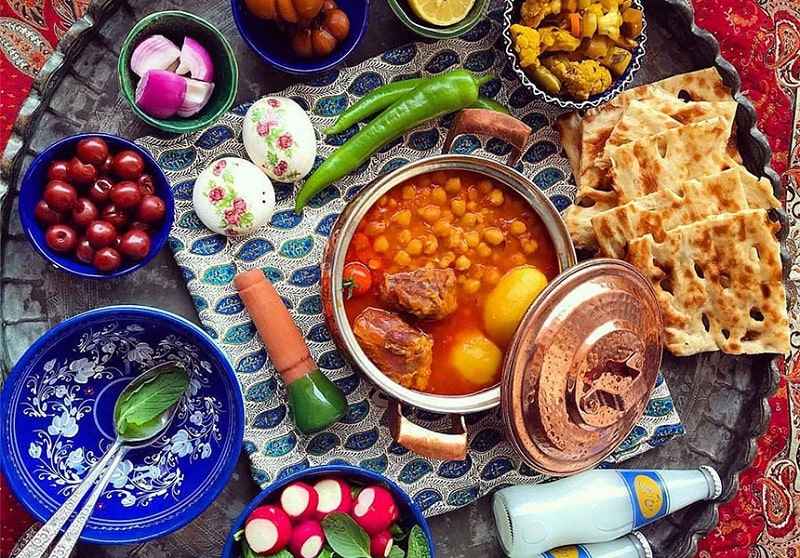 Dizi is the most traditional Persian food with tasty stories behind. It is a historical rural cuisine that farmers cook. They build fires and stirring meat, tomatoes, and beans with salt and pepper.
Dizi is the most traditional Persian food with tasty stories behind. It is a historical rural cuisine that farmers cook. They build fires and stirring meat, tomatoes, and beans with salt and pepper.
Day 6: Ardabil-Gilan, Open-air Heritage of Iran Villages Tour
- Drive 210 Km to Masouleh village, O/N Gilan.
- Having An Excursion Alongside Khalkhal to Asalem Road
Gilan the capital of Iran gastronomy art lies alongside the Caspian Sea. The city embraces Hyrcanian forests as a UNESCO World Heritage Site. The forests date back to 42-50 million years ago and influenced Gilaki cuisine so much. Gilan plays an important role in shaping Persian food culture regarding the production of home garden vegetables, rice, and fresh ingredients. Also, the UNESCO Creative City of Persian Food is the homeland of rich customary beliefs and social forms. Gilan narrates incredible culture such as language, gastronomy, music, clothes, and rural lifestyle.

Today, we discover a kind of Azerbaijan nomadic hand-weave carpet on the way to Gilan. Good to know that, the Azeri people call it Jajim. It is a type of Persian Kilim in Ardabil. Jajim is a model of a colorful Persian rug that Azeri people make out of wool or silk. Azeri use it to wrap bedding as it is a half meter in length and twenty mm in width. Besides, the Iran Villegas Tour takes us to the Sabalan preserving area. Sabalan is famous for its natural food and fruit products. Honey Qotab as a local snack tastes very different from what tourists expect. Then, we find out more about food sustainability in beehive farms. We touch the hard work of locals who produce honey. The Sabalan honey is a must in the Iranian breakfast and brunch menu.
Overnight Gilan.

Day 7: Gilan, Gilaki Local Art And Culture
- Visiting Masouleh, O/N Masouleh.
Today, the Iran Village Tour takes us to Masouleh village. It is a characteristic settlement in Foman County. Masouleh shows extraordinary architectural beauty. Houses lie ahead in the brown exterior design with woody windows. Locals decorate windows with flowerpots that are full of colorful blossoms. It is incredible to know that the courtyard of a house is the roof of another. As well, locals cook tasty Gilaki food such as Baghalighatoq with fresh ingredients and additives. Food garnishing is a great heritage of Gilan and its villages in Persian food culture.
Overnight Gilan.
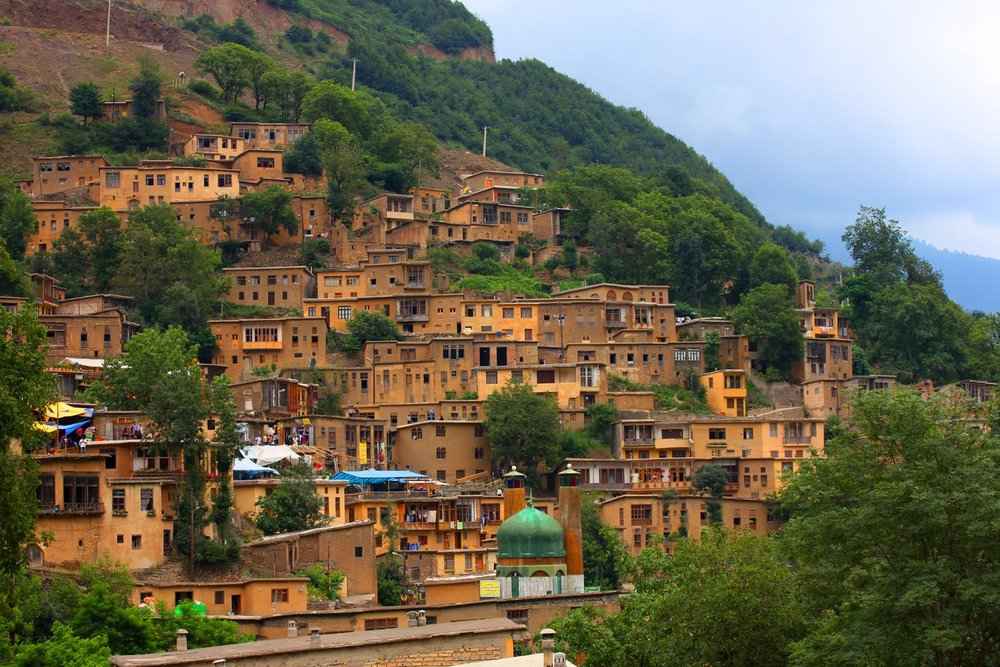
Day 8: Gilan-Qazvin-Tehran, Gilan is the Home of Diverse Iran Villages
- Drive 75 KM to Tehran, O/N Tehran.
- Having An Expedition to Gilan Rural Heritage
- Visiting Qazvin: Saad al-Saltaneh caravanserai, Chehel Sotun Pavilion, Four Prophet Mausoleum
Iran Villages Tour takes an excursion to Gilan Rural Heritage Museum. The museum gives a better understanding of Iranian village cuisine and recipes alongside Hyrcanian Forests. Then, we will move toward Qazvin. Qazvin, a city with 9000 years of civilization lies on the way of the Silk Road. Qazvin’s history proves its significance to be the capital of the country in different periods.
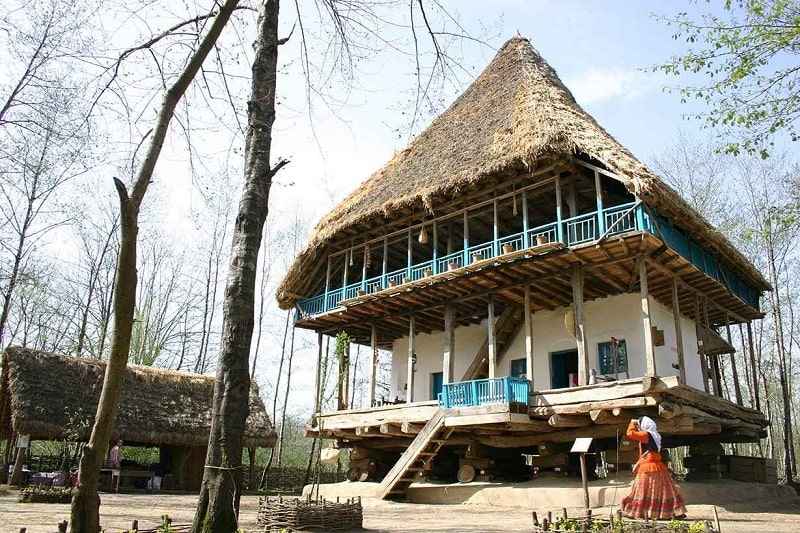
Qazvin embraces rice-based Persian food and incredible grape gardens. Safavid kings used to govern the country from Qazvin with their special rice-based Iranian cuisine. Royal food mostly included rice and beef during the Safavid Dynasty. Qazvin is not only popular as the Persian Food Capital but also for the cooking art of Iranian traditional food. Good to say that, jeweled rice meals such as Morasa Polow and Qeimeh Nesar are the gastronomy heritage of Qazvin.

Then, we start our Qazvin tour by walking to the best-preserved caravanserai in Iran. Saad al-Saltaneh caravanserai is the largest urban one of its kind. The architecture shows Iwan, Hojre (Travelers room), Dome, and courtyards. The caravanserai provides a relaxing atmosphere for travelers and traders. There are great cafes and restaurants to taste Persian food and Sherbat (drinks). Then, we walk to the Chehel Sotun Pavilion which goes to the reign of the Safavid Dynasty. Qajar Dynasty reconstructed the building and now it is a Calligraphy museum. After that, we take a walk to the Four Prophet Mausoleum. It belongs to four Jewish prophets.
Overnight Tehran.
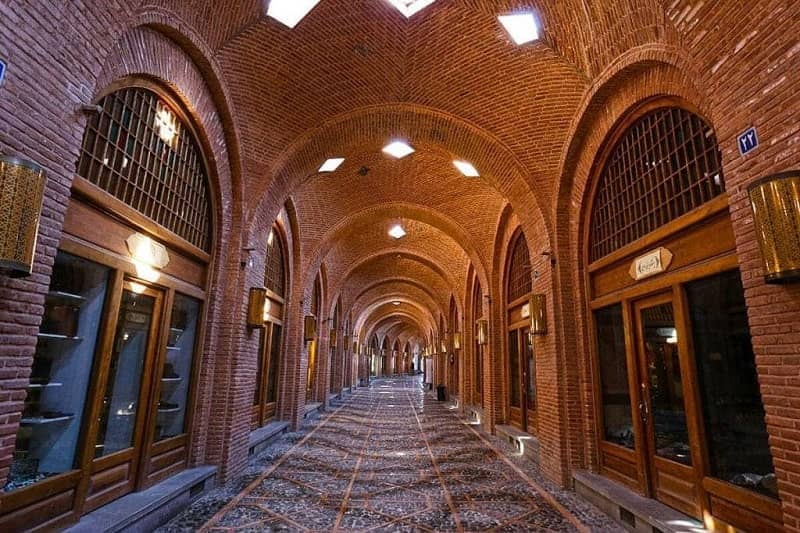
Day 9: Tehran, Western Design in Eastern Culture
- Visiting Tehran, O/N Tehran.
- Visiting Golestan Palace, Tehran Grand Bazaar, National Jewelry Museum (Treasury of National Museum: Sat to Tue 14:30 to 16:30), Iran National Museum
Tehran is the most modern city and capital of Iran. It clearly shows the classical and modern combination of Persian culture. Tehran embraces cultural & natural landscapes with the brilliant glory of palaces and distinctive museums. The Iran Villages Tour starts with Golestan Palace (UNESCO Heritage) in Tehran. It is a royal complex over 400 years old as a brilliant historical monument of Tehran. Golestan Palace‘s peculiar ornaments such as tiling, mirror-works, and paintings, surpassed the four kings crowned in its majesty.
Walk Through Iran’s Royal and Ancient History
After that, (Sat to Tue 14:30 to 16:30) we will walk to the Treasury of the National Museum (National Jewelry Museum). It shines for the beauty of the diamonds, jewels, and illustrious royal heritages. In the evening (if the National Jewelry Museum was closed) we keep traveling deep into Persia by visiting Iran National Museum. It is a cradle of Persian stories that holds archaeological collections in two separate structures. They are the Ancient Iran Museum and the Museum of the Islamic Period. The museum presents you with the culture, art, and history of Iran.
Overnight Tehran.
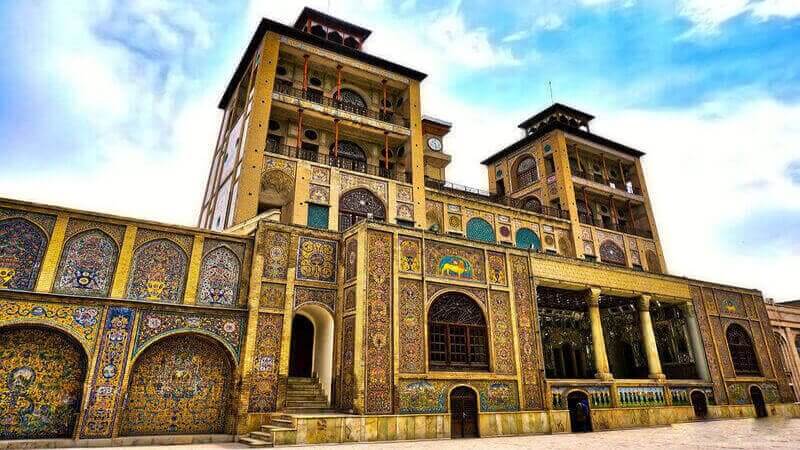
Golestan Palace is an incredible collection of gorgeous exterior decorations with a combination of French and Persian architecture. It embraces unbelievable interior design with eye-catching mirrorwork, woodwork, and plasterwork.
Day 10: Tehran, Shemiran Villages Shapes a Garden Palace
- Visiting Tehran, O/N Tehran.
- Visiting Sa’ad Abad Complex, Tajrish Bazaar, Imamzadeh Saleh Holy Shrine
The Persian Architecture Tour will take you to the Sa’ad Abad Complex which lies at the base of the Alborz mountain range. The complex boasts a lush green environment and delightful weather, making it a royal residence for two dynasties. Saad Abad Palace is home to palaces, museums, and galleries that showcase Iran’s contemporary era in great detail. Afterward, we will visit the holiest shrine in Tehran, Tajrish (Imamzadeh Saleh), which provides a spiritual experience. It is located close to the traditional Tajrish Bazaar, where you can learn more about the traditional Persian way of life.
Overnight Tehran.
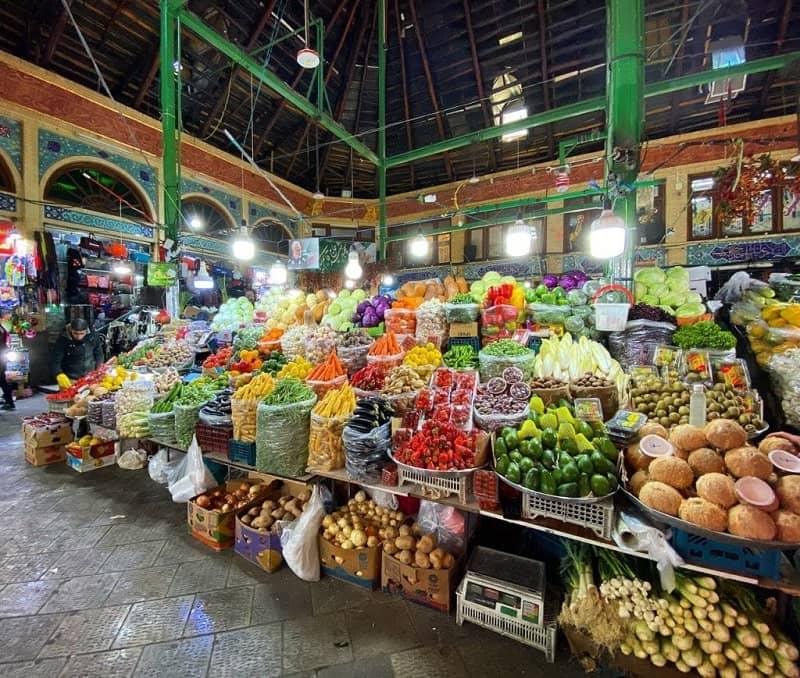
Day 11: Tehran-Isfahan, Road to Red and Brown Desert Village
- Drive 230 km to Kashan, O/N Kashan.
- Visiting Borujerdi House, Sultan Amir Ahmad Bathhouse, Tabatabai House, Fin Garden & Agha Bozorg Mosque.
Today, the Iran Villages Tour devotes itself to Kashan legacies that begin with Fin Garden (UNESCO Heritage). It depicts a genuine paradise, telling us stories about Iran’s contemporary era and ancient architecture. After that, we will visit Boroujerdi House which combines the desert style of wind-catchers with Persian traditional models of iwan. Boroujerdi House consists of superb plasterwork in interior and exterior decoration. Soon after, we will touch Sultan Amir Ahmad Bathhouse to feel Persian architecture in a traditional bath. Next in order of time, we walk to Tabatabaee House which is an incredible type of Persian house. Tabatabaei House shows Iranian art with its stone reliefs, stucco, and colored glasses. Finally, we travel to visit Agha Bozorg Mosque which is the only one in its model as a mosque with a sunken courtyard.
Overnight Kashan.

Day 12: Kashan-Isfahan, Iran Villages Tour Inspires Travelers with A Red Village
- Visiting Kashan, Drive 220 km to Isfahan, O/N Isfahan.
- Visiting Aminodole Caravanserai and Khaju Bridge
- Having an Excursion to Abyaneh Village
Iran Villages Tour continues with Aminodole Caravanserai at the center of Kashan bazaar. It is a coherent form of structure that reflects the cultural and economic hub of the city. After that, we will have an expedition to Abyaneh village to experience one of the ancient rural areas in Iran. Abyaneh village shows historical traditions and customs along with distinctive habitable buildings.
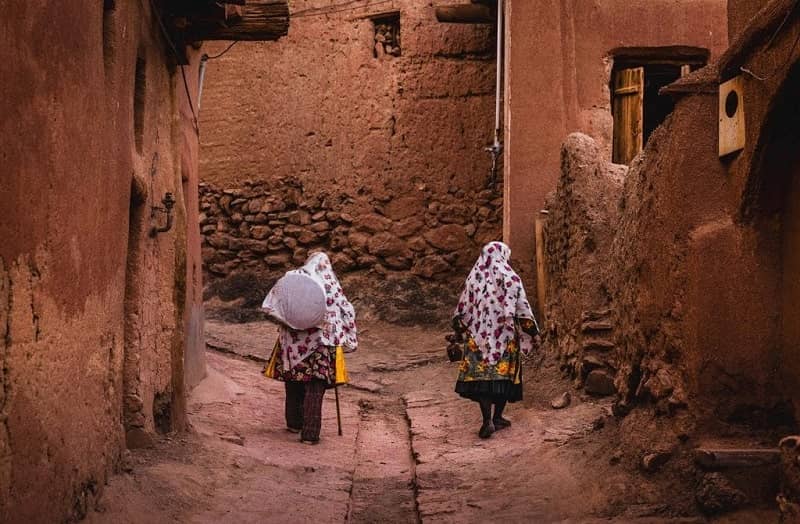 Abyaneh Abyaneh village is a reddish village with an incredible rural lifestyle.
Abyaneh Abyaneh village is a reddish village with an incredible rural lifestyle.Perso-Islami Architecture Capital
Finally, we travel to the capital of Perso-Islamic Architecture. We touch Isfahan by sensing the white river to indulge in the beauty of Khaju Bridge. The architectural, tiling, and painting style of the Khaju Bridge is a global masterpiece. As well, walking on Khaju is one of the most enjoyable tourist activities in the evening in Isfahan.
Overnight Isfahan.
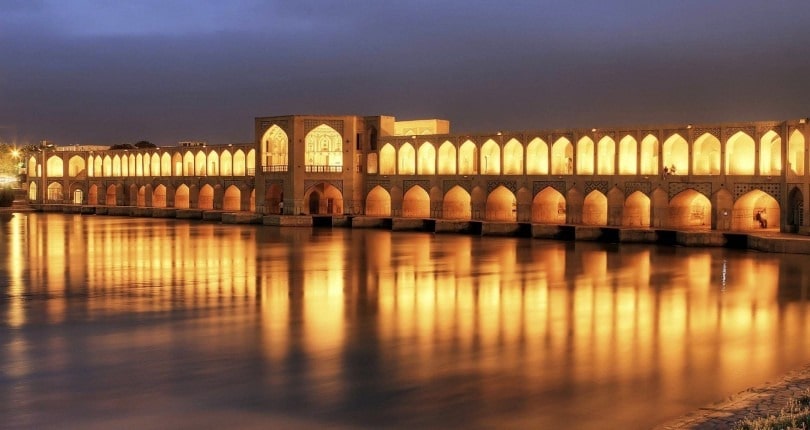
Khajoo Bridge, one of the most eye-catching historical monuments, was built during the Safavid period on the Zayandehroud River by Shah Abbas II in Isfahan.
Day 13: Isfahan, Iran Villages Tour Goes to City of Art
- Visiting Isfahan, O/N Isfahan.
- Visiting Qeisarie Gate, Naqshe Jahan Square (Sheikh Lotf Allah Mosque, Shah Mosque, Ali Qapu Palace), Chehel Sotun Palace, Sio Se Pol Bridge
Isfahan, the city of glories and Perso-Islamic masterpieces devoted itself to craftsman’s heritage. It is the center of art, not only in architecture or handicrafts but also in urban structures and music. Isfahan is a treasure of mosques, cathedrals, mansions, bridges, and gardens. Iran Villages Tour Tour through Isfahan begins with a three-floor Gate. Qeysarieh Gate is in remembrance of Shah Abbas King as the main entrance to Isfahan Grand Bazaar. It directs us to Naghsh-e Jahan Square (Meidan Emam) to visit the masterwork of chief architect Sheikh Bahaee.
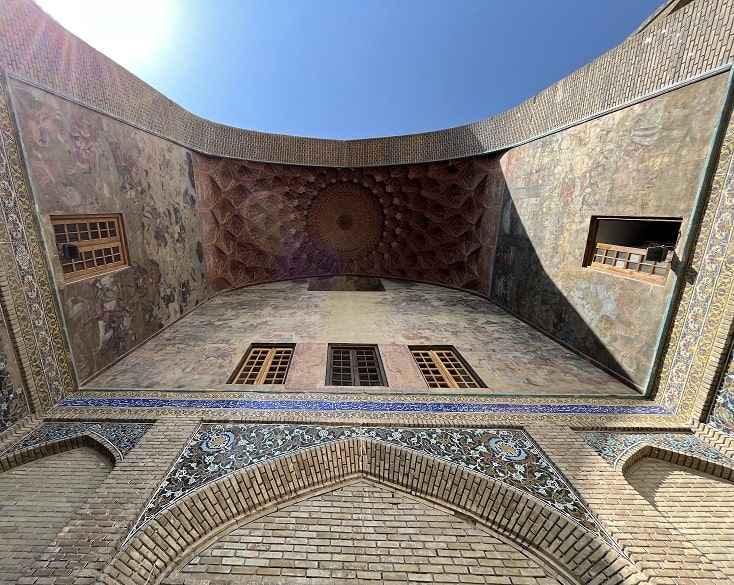
The main entrance of Naqsh-e Jahan Square
Artistic Gallery of Persian Genius Crafts And Royal Heritage
We will start visiting the genius heritage of the Meidan with Sheikh Lotf Allah Mosque (UNESCO Heritage). It amazes visitors with the genius interior and exterior decoration of the hall, dome, and Shabestan. Sheikh Lotf Allah Mosque was a royal mosque dedicated to Shah Abbas Safavid Harem.
Then, we will have a workshop on the art of Minakari. It demonstrates to us how ancient Persians enameled objects to place heaven into them. In Minakari, artists decorate metal (mostly Silver and Copper) or tile with patterns and paintings. Soon after, we will visit the Shah Mosque (UNESCO Heritage), which is the real meaning of Persian architecture and art in the Islamic era. It consists of iwans, domes, tilling, and supreme engineering of a voice echoing. Finally, our trip to the square will end at Ali Qapu Palace (UNESCO Heritage). It is a gallery of art in terms of music, painting, and decoration in an acoustic structure.

The plan of Ali Qapu Palace is such that it disrupts the viewer’s mental calculations. The difference in appearance with changing the angle is one of these wonders in Isfahan.
By nourishing our minds in the square, we will walk to Chehel Sotun Palace (UNESCO Heritage). It is a relaxing atmosphere with gorgeous paintings awaiting us. Chehel Sotun Garden pillars photo reflected into the front pond and makes an unbelievable picture. Then, we will travel to the white river to indulge ourselves in the beauty of the worldly known Si-O-Se-Pol Bridge.
Overnight Isfahan.
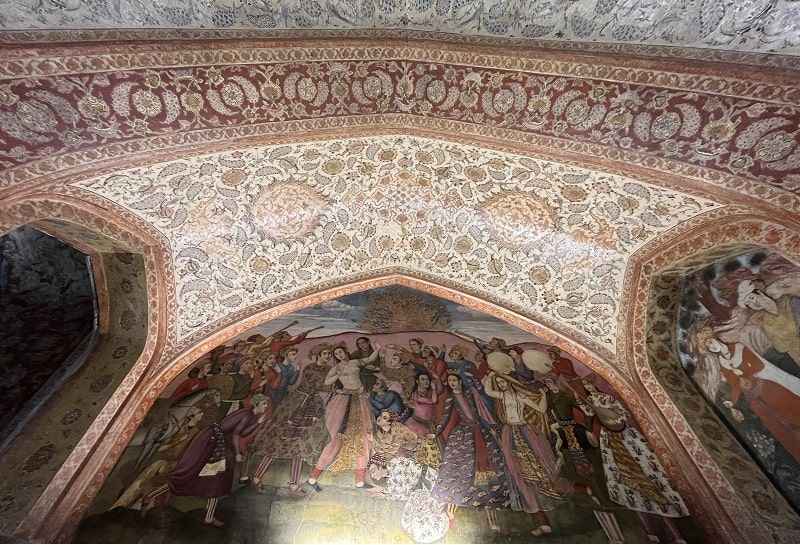 Chehel Chehel Sotun Pavilion depicts a Persian garden with a royal mansion shining like a gem in the heart of an orchard.
Chehel Chehel Sotun Pavilion depicts a Persian garden with a royal mansion shining like a gem in the heart of an orchard.
Day 14: Isfahan, Sacred Spots
- Visiting Isfahan, O/N Isfahan.
- Visiting Vank Cathedral, Armenian Genocide Memorial, Isfahan Jame Mosque,
- Having Ghalamzani Workshop, Then Pleasure at Your Pace
Today, the Iran Villages Tour includes Vank Cathedral’s fascinating paintings and mosque-like dome. Shah Abbas Safavid forced Armenians to move to Isfahan and they constructed such an artistic gallery as a holy place. After that, we will travel to Isfahan Jameh Mosque (Masjed-e Jame of Isfahan) to discover a unique practice of designing a holy place. Masjed-e Jame Isfahan is the remains of a fire, even narrations of a house of worship for Zoroastrians.
Isfahan Jameh Mosque’s (UNESCO Heritage) magnificent turquoise dome shines like a diamond in the south of Isfahan. Isfahan Jameh Mosque is a unique holy place for the renovation and reconstruction of one of the oldest mosques in Iran. Then, we will learn how masters do Ghalamzani to create outstanding works with superb silver, copper, brass, and gold designs. Artists place visionary engravings on objects to create Ghalamzani handicrafts. Finally, we will have the evening at our pleasure.
Overnight Isfahan.

Day 15: Isfahan, Iran Villages Tour Touches Desert Palm Garden
- Drive 380 km to Garmeh Village, O/N Garmeh.
- Having an Expedition to Naein County (Visiting Jame Mosque & Desert Anthropology Museum & Rigareh Qanat-based Water Mill).
- Exploring Garmeh Village.
Iran Villages Tour devotes itself to exploring a brown area of the culture. Kavir Desert is a mysterious region of Iran. Climate plays an important role in shaping the local civilization. Kavir desert lies in the central part of the country above Lut Unesco World Heritage. The desert embraces a distinctive atmosphere, architecture, agriculture, water supply system, and culture.
Our exploration begins with Naein County in the Kavir desert. It is an ancient region famous for the qanats, handicrafts, and castles. Also, we will visit Naein Jameh Mosque, one of the four mosques built soon after the Arab conquest of Persia. After that, we will learn more about desert citizens’ lifestyles by surfing at the Naein Anthropology Museum. Then, we will travel to the Rigareh Qanat-based Water Mill. It lets us investigate how people quenched their thirst by constructing qanat underground since 1000 B.C. Finally, we will drive to Garmeh village to become fascinated with palm gardens quenched with flowing water from springs. It is surprising but water passages are full of tiny fishes to feel mellow in pleasant surroundings.
Overnight Garmeh.
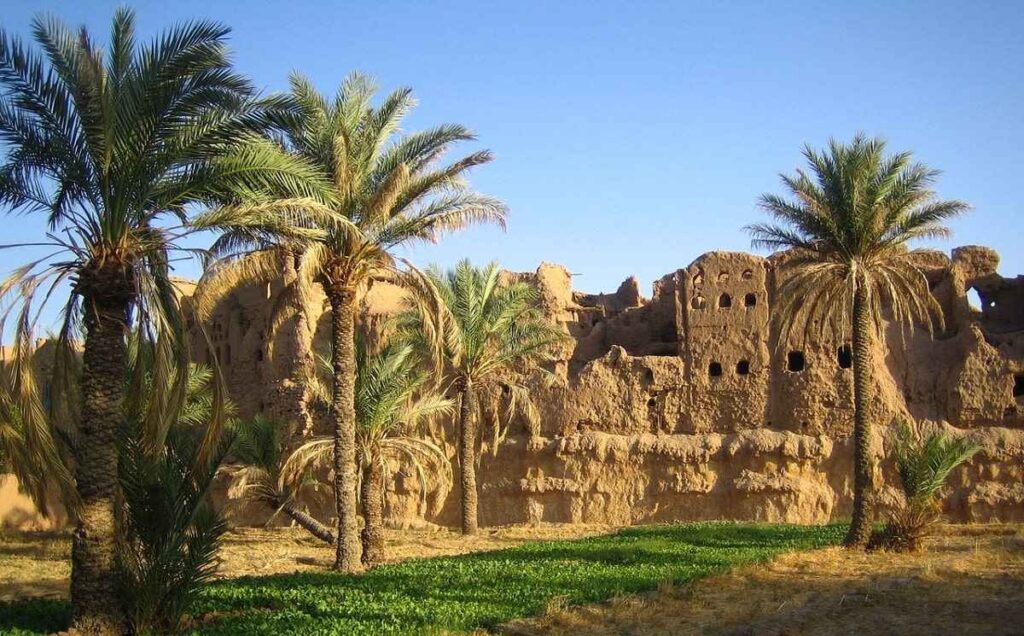
Day 16: Isfahan-Yazd, Iran Villages Tour Mud Brick Culture
- Drive 230 Km to Meybod county, O/N Meybod.
- Having an Expedition to Kharanaq Village.
- Having an Expedition to Meybod county (Visiting Abbasi Caravanserai, Water Reservoir, Ice House Building & Narin Castle).
We will embark on a full-day road trip into the heart of the desert. Iran Villages Tour expedition starts with Kharanagh village to experience the mountainous district in the desert of the desert. The expedition displays exceptional architecture in Kharanagh Castle, caravansarai, and Menar Jonban.
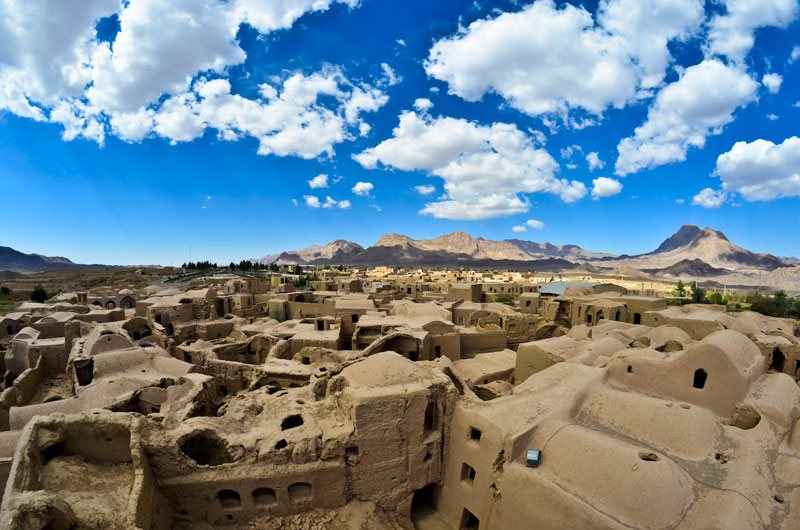
We will continue our journey to Meybod County to explore a region that was the Mozaffarid Dynasty’s capital. Meybod is widely known in terms of architecture and handicrafts in the northern part of Yazd. Our visits will include Abbasi Caravanserai which displays how travelers used to rest on the way on their trips. Then, we will take a walk to a traditional water reservoir which plays a vital role in providing safe and clean water in the desert. Soon after, we will have a glance at the Ice House which feeds the county with Sufficient Ice reminded from winter to summer. It works based on an evaporation engineering masterpiece since 1000 B.C. Finally, we visit Narin Castle, which used to be a fortress during existence, dating back to the Achaemenid era.
Overnight Yazd.
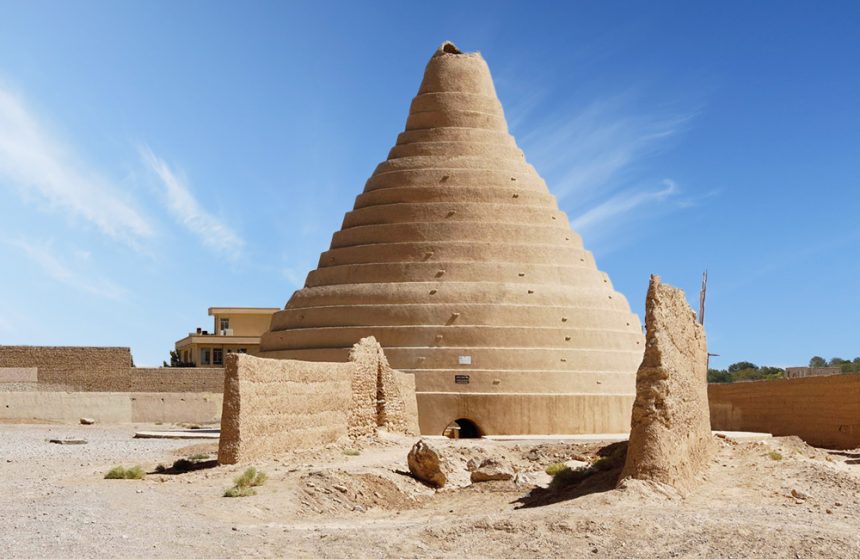
Day 17: Yazd, City of Wind-Catchers
- Visiting Yazd, O/N Yazd.
- Visiting Jame Mosque, Walking in the Historic Area of Fahadan to Alexander Prison
- Visiting Fahadan Paint Shop, Lariha House & Yazd Fire Temple, Visiting Amir Chakhmagh Complex, Zourkhaneh (Pahlavani Rituals) & Dowlat Abad Garden.
Yazd is a city that displays human adaptation to the hard natural desert through its unique architecture. Yazdi people use simple materials to build astonishing structures such as wind-catchers, baths, mosques, and houses. Those masterpieces preserve the residents’ lives in the heart of the desert through the art of architecture. As an example, qanat construction is an ancient engineering knowledge that conveys water from natural sources to quench people and farms. The is the home of Persian sweeties and a famous land in handicrafts. Also, religious diversity enlightens you about Zoroastrians, Jews, Christians, and Muslims in Yazd.

Firstly, we walk through Cashmere Fabric (Termeh) street as the emanation of art in warp and weft of cloth. Some believe that the age of Termeh goes back to more than 500 years ago. Yazdi people make Termeh out of wool and silk. at the end of the street, we will reach the old town of Yazd. Iran Villages Tour in the oldest district of Yazd begins with Yazd Jameh Mosque. The brilliance of the mosque tilling dazzles eyes next to the highest minarets in Iran. Yazd Jameh Mosque depicts harmonious crafts between Islamic and Persian architecture.
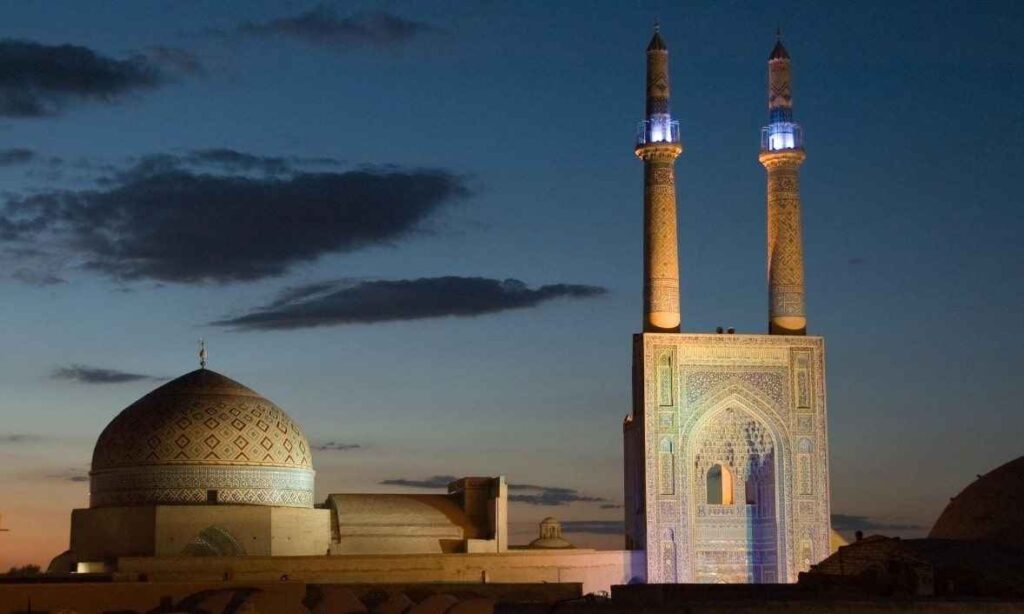
Brick and Mud Architecture
Art makes us walk to the Fahadan area (UNESCO Heritage). Let’s explore the brick-and-mud lifestyle with a particular style of houses, gardens, and buildings. The Fahadan area brings ancient customs and traditions to the city. After that, we will reach Alexander Prison on the way to Fahadan Paint Shop. We will have a glance over Yazd handicrafts and purchase souvenirs. Soon after, we walk to Lariha House to capture a view of desert art in a well-decorated location. The house embraces architecture of wind-catchers, archways, plaster-work, and stained-glass windows.
Then, we will visit the Zoroastrian Fire Temple. It is continuously burning for around 2500 years. Finally, we will experience a traditional form of athletics exercise used to train soldiers for warfare in Zourkhaneh (Pahlavani Rituals). Today, Iran Villages Tour Tour ends with having a pleasing night in a calm atmosphere. We will move to the highest wind-catcher in the world with peculiar architecture in Dowlat Abad Garden (UNESCO Heritage).
Overnight Yazd.

Day 18: Yazd-Shiraz, Iran Villages Tour to Motherland of Persians
- Drive 440 km to Shiraz, O/N Shiraz.
- Having an Expedition to Abarkuh County
- Having an Expedition to Abadeh County
- Having an Expedition to Pasargadae
Departing Yazd, we travel to Shiraz on an expedition to Abarkooh County to wander at the 4500-year-old Cypress Tree. Soon after, the Persian Architecture Tour takes us to the Global City of Wood Carvings to discover the very skillful art of Monabatkari or Moghaarkari. In Monabatkari, professionals replete woods with religious designs or flower motifs in their workplace.
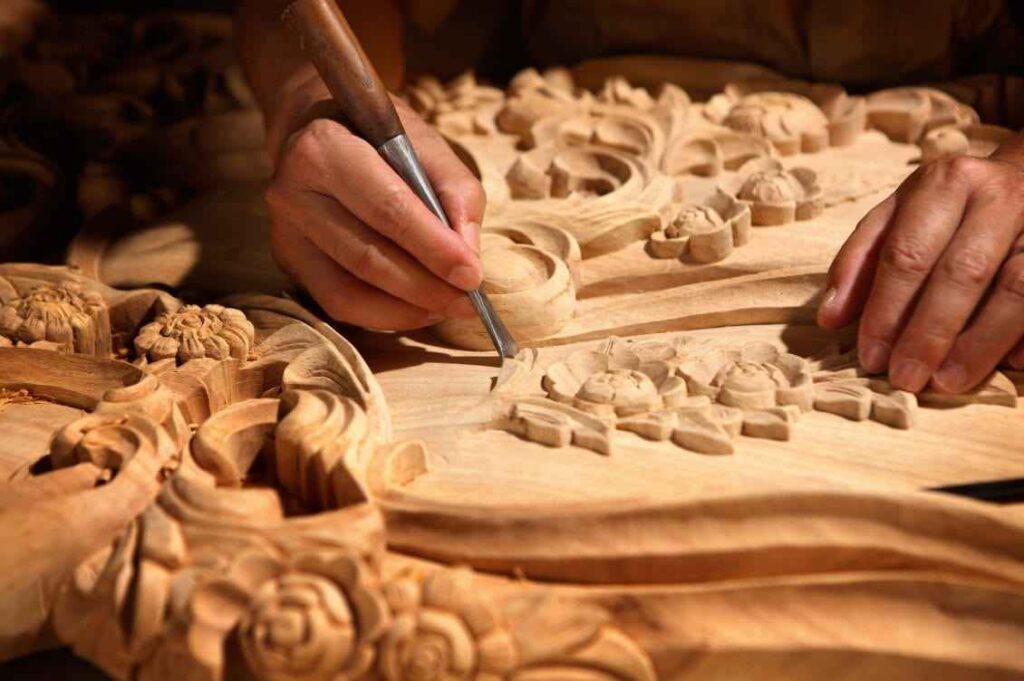
Road to Achaemenid Empire Heritage
Shiraz is the city of ancient majesty of Persia. Achaemenian’s and Sassanian’s glories are the heritage of the city of prose & poem, gardens, and flowers. Historical ornaments such as Persépolis and Pasargadae are spread through the tale of the province from 2500 years ago. Also, spirituality is always associated with the story of the people, not only during Zoroastrianism but also at the time of Islam to the present era.
Achaemenid legacies shine like diamonds in the ancient and modern world. Though, the majesties narrate stories of the ever-greatest empire on earth. So, the Persian Architecture Tour directs us to Pasargadae, the ancient capital of Achaemenid. Cyrus the Great ordered the building of Pasargadae as a great heritage of ancient Persian architectural heritage. Pasargadae (UNESCO Heritage) used to be the capital of Persia during Cyrus the Great. There are royal palaces, a famous fourfold Persian model of the garden, and his necropolis.
Overnight Shiraz.
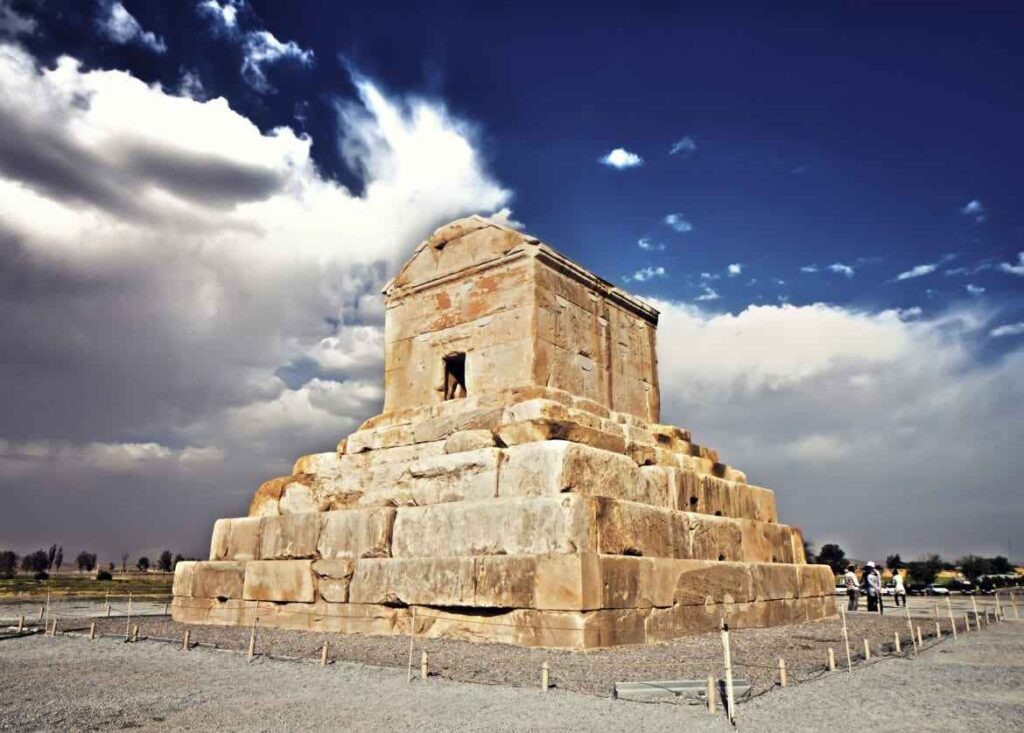
Pasargadae ancient city embraces Cyrus the Great Tomb, Pasargadae Garden, and the Prison of Solomon. It demonstrates better detail about the first king of the Achaemenid empire and the urban structure of the time.
Day 19: Shiraz, Iran Villages Tour Textile and Nomads Lifestyle
- Living in a Nomad Cottage, O/N Shiraz.
- Gardening, Milking Cows, and Tasting Hot Cup of Tea Brewed with Fresh Herbs
Immersing oneself in a natural and peaceful environment can do wonders for the soul. Spending time in the company of people who have upheld their customs and traditions for generations can help one reconnect with their roots. For those seeking a break from the monotony of city life, there is nothing quite like living amongst people who are in perfect harmony with nature. Iran Villages Tour embraces such an experience to take us to the traditional Persian village lifestyle.
In rural areas, daily life is centered around agriculture, with people working on their farms, gardens, and orchards. They tend to their livestock and enjoy the simple pleasures of life. The air and water in these areas are organic, and the fruits and vegetables are freshly picked from the soil.
A visit to a garden village offers a chance to walk among the trees, taste the local cuisine, and enjoy a hot cup of tea brewed with fresh herbs. Aghamir’s Cottage is the perfect destination to experience the heart of rural life in Shiraz. Spend a day here, and you will get a taste of the simple yet fulfilling life that the locals lead. From milking cows, goats, and sheep to picking fruits and vegetables. Every activity here is a celebration of nature and its bounties.
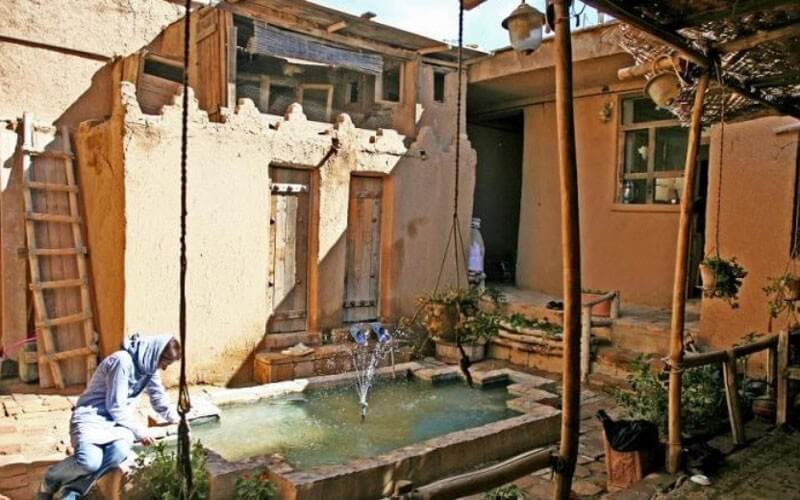
Day 20: Shiraz, Gate of History
- Visiting Shiraz, O/N Shiraz.
- Having an Expedition to Persepolis, Persia Necropolis, Naqsh-e Rajab & Naqsh-e Rustam, Cube of Zoroaster, and Tomb of Saadi.
Iran Villages Tour takes us to Persepolis on the way to Shiraz. It is one of the three Achaemenid Empire Capitals. Darius the Great constructed the palace and dedicated it to ceremonial events to demonstrate the imperial majesty and eminence. Persepolis with the meaning ‘city of Persians’ is a great example of the Achaemenid architectural style. After that, we will visit Naqsh-e Rustam a necropolis embracing tombs of emperors of Persia in rock cuts. Also, kings have engraved their messages on rock reliefs in the necropolis. In addition, there is a Zoroastrian sacred place “Cube of Zoroaster” as a spiritual monument.

Soon after, we will take a short walk to Naqsh-e Rajab, an open-air archaeological archive. Naqsh-e Rajab displays Sassanid imperial impregnable power and triumphs over the Roman emperor on bas-relief inscriptions. Finally, we will touch Sa’diyeh, the mausoleum of a poet whose words and wisdom enlighten your soul. Saadi Shirazi with his global reputation for verses about human rights left us the most valuable heritage by writing books such as Golestan & Bostan.
Overnight Shiraz.
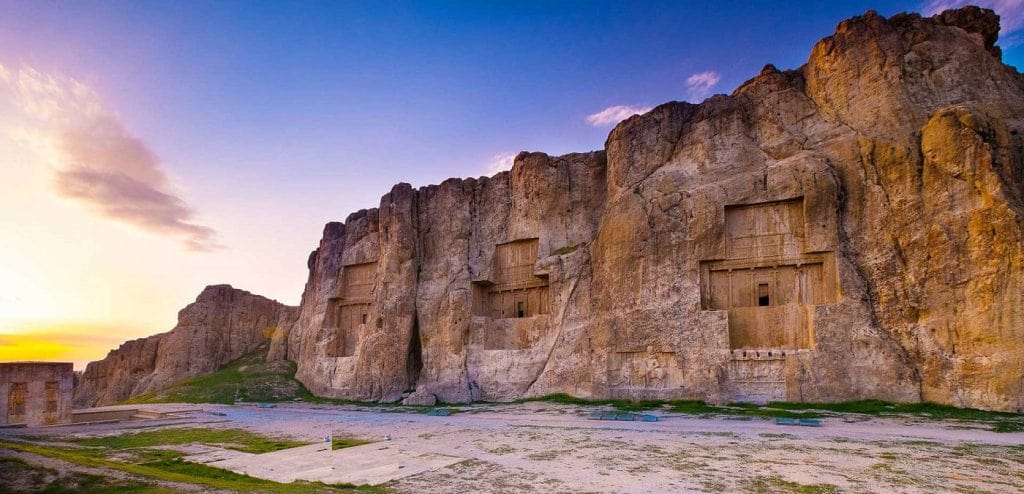
Day 21: Shiraz, City of Colorful Design and Loving Words
- Visiting Shiraz, O/N Shiraz.
- Nasir-Almolk Mosque (Pink Mosque), Atiqe Mosque & Shahcheragh Holy Shrine, Eram Garden, Tomb of Hafez.
Iran Villages Tour takes us to visit Nasir-ol-Molk Mosque. It is a supreme intellectual and artistic sacred place which proves no comparison with the typical mosques. Spirituality lies inside when sunshine passes through the colorful glasses of windows to Persian carpet orchards. Also, the superb ceiling ceramic work surprises tourists in Nasir-al-Molk Mosque. Soon after, we will walk to Zinat Al-Molk House. It is a Persian style of home, to fascinates visitors with the mirror works and woodwork. after that travel to Atiqe Mosque the one that Shirazi call it Adineh too.
Then, we experience Shahcheragh, the third holiest shrine in Iran. It provides visitors with a very sophisticated feeling of spirituality as a reason for its brown color face. Finally, we indulge ourselves in the architecture of Eram Garden (UNESCO Heritage). It is the original meaning of Paradise (Pardis in Persian Language). It displays Persian structures in magnificent buildings and a botanical garden. Finally, we will dedicate our evening to Hafezieh. It is the mausoleum of a poet whose love stories, spiritual beliefs, and sagacious poems left an untouched legacy behind for readers to alleviate. Hafiz Ghazal by the use of eloquence inspired Persians to fall in love, be honest, and worship Allah
Overnight Shiraz.
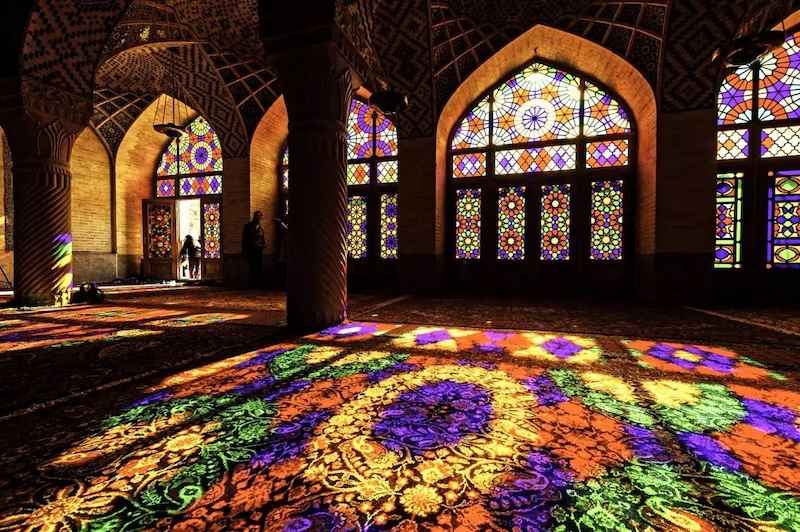
Day 22: Shiraz-Kerman, Sun and Sand Heritage of Iran Villages Tour
- Fly to Kerman (if available), O/N Kerman.
- Visiting Ganjali Khan Complex, Fath-Abad Garden.
Departing Shiraz we travel to Kerman to visit Ganjali Khan Complex. It is a historical district that Ganjali Khan as the governor of Kerman built to devote himself to public services. The archive of the area includes mosques, a bath, a Bazaar, and a school all contribute to the area’s prosperity. Kerman is well-known for the flavor of Kolompeh. Kolompeh is the special Kermani cooky inside which, is filled with mashed sweet date palm. Kermani women bake Kolompeh in traditional ovens as one of the most popular Persian souvenirs. Soon after, we will have a touch of softness and tenderness of art in a Kermani house manifests a frame of paradise. Kerman is home to incredible villages of Iran Villages Tour.
Pete feels like to keep a piece of heaven in your house. It is one of the famous handicrafts of Kerman province and the art of creating patterns with hairs is called Ris. The most popular Pate used to cover the grave of Shah Nematullah Vali. Then, we will move to Fathabad Garden. The garden came into existence as an imitation of the Shahzadeh Garden during the Qajar Dynasty.
Overnight Kerman.
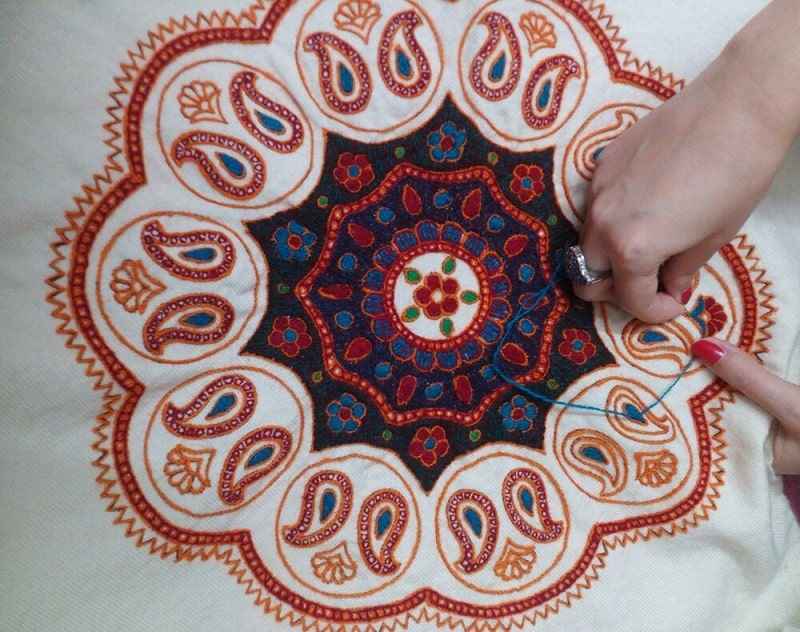
Kermani women are artists whose art is rather crafts, clothing, or architecture. They also present themselves in sweet cooking, rug design, and unique fabric weaving.
Day 23: Kerman, Lut UNESCO Desert Villages
- Drive 190 km to Bam Citadel, O/N Kerman.
- Having an Expedition to Shazadeh Mahan Garden, and Bam Citadel.
- Having an Expedition to Shahdad Village, Lut Desert.
Today, the Iran Villages Tour takes us outside of Kerman to Bam Citadel. Meanwhile, on the way to Bam, we will visit Shazdeh Mahan Garden. The garden is a true prototype of a Persian garden with a gorgeous mansion. incredibly, trees and facing fountains surrounded Shazdeh Mahan to depict Persian paradise. Then, we will keep our tour to Bam Citadel (UNESCO Heritage), the biggest adobe structure in the world.
Bam has embraced ancient stories since more than 1000 B.C. Achaemenid Empire renovated Bam Citadel to preserve its mysterious and magical glories. The heart of the citadel is the defensive fortress, which includes a residential area, buildings for lodging soldiers, and the governor’s residence. On the other hand, Bazaars, mosques, watchtowers, and gates are other significant constructions. Unfortunately, a late earthquake (2003) destroyed most parts of the citadel. Whereas, archeologists and the government hugely invested in renovating and reconstructing Bam Citadel.
Iran Villages Tour lets us escape from the helter-skelter of the city to the calm and silent virgin nature of the Lut desert (UNESCO Heritage). Our soul flies to the sky and floats softly in a sea of stars. When we look at the galaxy in the evening while the sun caresses the soft sands another world shows itself with all the details in the Lut Desert.
Overnight Shahdad.
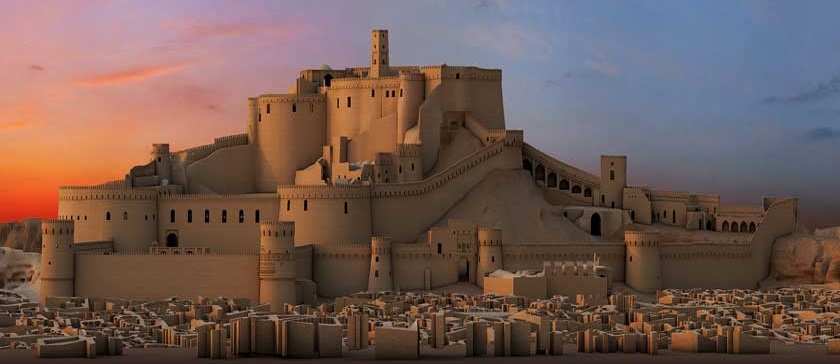
Bam Citadel displays how ancient Persians adapted their lifestyle by identifying the nature of the Lut Desert in Kerman. Also, how they adjusted their architectural power in Persian relation with the universe.
Day 24: Kerman, Iran Villages Tour Says Goodbye, Fly Home
- Having an expedition to the Lut (Mahan) Desert
Lut Desert is a diverse space in biodiversity from animals with extraordinary physical abilities to unique plants such as Nebkas. Nebkas may be the only inhabitants in the desert who stubbornly strive for life. In addition, Kalut as the sandy hills is the other unique natural element of Lut that describes the identifying environment of Lut. Trees in this region have made a pot out of the plain as the largest found Nebka is around ten meters long and belongs only to the Lut Desert—these trees and hills trape in the soil in the Mahan Region. Mahan embraces the warmest spot in the world, located in the southeast of Kerman province.
